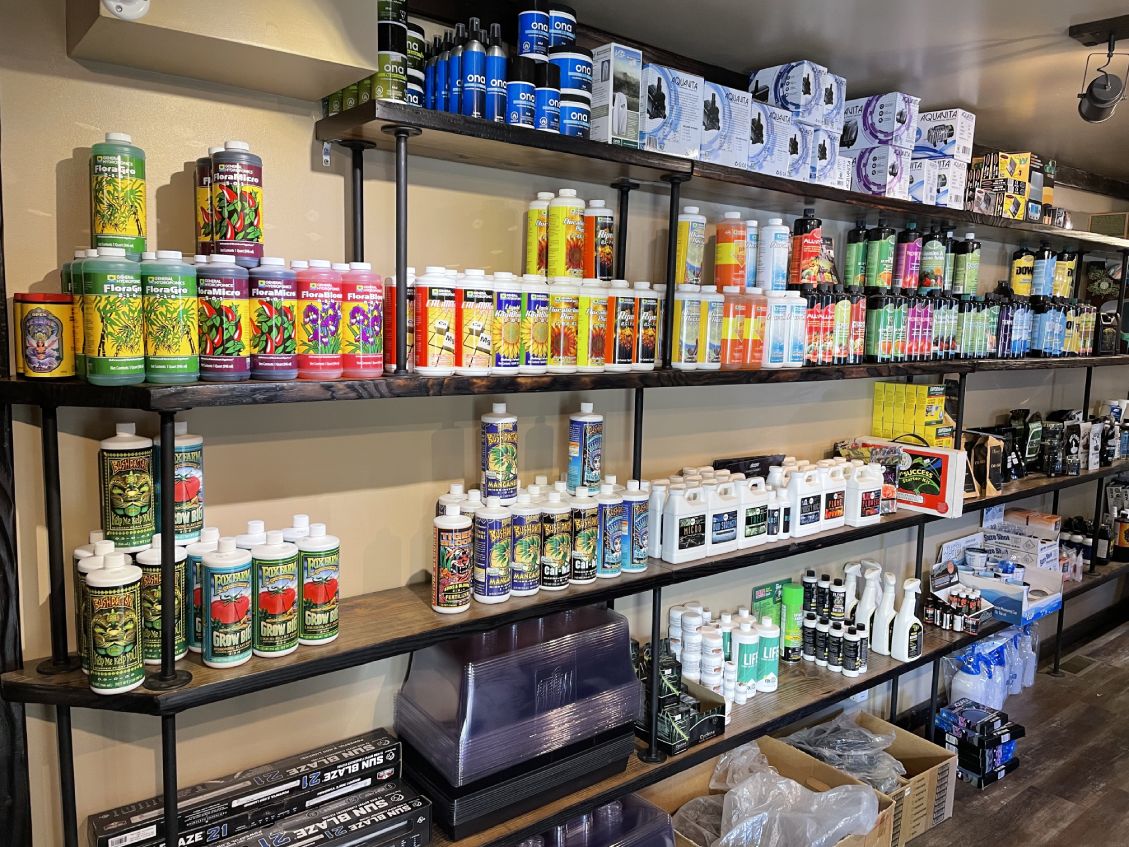Unravel the Keys of Successful Planting with The Indoor Earthworm
Unravel the Keys of Successful Planting with The Indoor Earthworm
Blog Article
Opening the Potential of Hydroponics: Comprehending Its Utilizes and Various Types
Hydroponics, an approach of growing plants without soil, has gathered boosting attention for its possible to reinvent agriculture and gardening practices. The precision control over nutrient distribution, water usage, and environmental elements offers a glance right into a future where food production can be enhanced in numerous setups. As we navigate via the complex landscape of hydroponic systems and strategies, it ends up being obvious that each strategy holds distinctive advantages and limitations. By unwinding the diverse usages and kinds of hydroponics, we can discover a globe of possibilities that might improve just how we visualize sustainable farming and gardening methods.
Advantages of Hydroponic Solutions

One more advantage of hydroponic systems is the capability to grow plants in a smaller space. By removing the demand for dirt, plants can be grown vertically or in piled systems, taking full advantage of using offered area. This is specifically valuable in urban areas or areas with limited cultivatable land. Moreover, hydroponic systems lower the danger of soil-borne conditions and parasites, as there is no dirt to harbor these risks. This leads to healthier plants and decreases the need for unsafe chemicals, making hydroponic farming a more eco friendly and sustainable alternative.
Typical Uses in Farming

Provided the efficient water preservation and space-saving benefits of hydroponic systems, it is obvious that these cutting-edge agricultural techniques have actually found typical uses in numerous industries of agriculture. In traditional farming, soil-based farming can be land-consuming and labor-intensive. Hydroponics uses a solution by enabling plants to be expanded without dirt, reducing water usage by approximately 90% compared to traditional farming approaches. This makes hydroponics especially appropriate for areas facing water deficiency or minimal cultivable land. The controlled setting of hydroponic systems enables year-round cultivation, offering a constant supply of fresh produce regardless of external climate problems.
Hydroponics is typically made use of for expanding a selection of crops, consisting of leafy eco-friendlies, tomatoes, cucumbers, herbs, peppers, and strawberries. Additionally, hydroponic systems are made use of in research study and instructional setups to research plant growth, nourishment, and growing strategies.
Checking Out Various Hydroponic Techniques
Hydroponic systems offer a range of approaches that provide to various plant kinds and growing objectives. In addition, the Ebb and Circulation system, also understood as the Flooding and Drain system, periodically floods the plant roots with nutrient service, allowing for oxygenation throughout draining periods. Each of these methods showcases the versatility and performance of hydroponic systems in enhancing crop development and return.
Contrasting Different Hydroponic Solutions
Discovering the efficiency and yield improvement methods in hydroponics leads us to compare numerous hydroponic systems offered for plant growing. Each hydroponic system has its one-of-a-kind attributes, advantages, and constraints, making it vital for growers to select one of the most ideal system based on their specific needs and constraints.
One of the most usual hydroponic systems is the nutrient film technique (NFT), where a thin movie of nutrient remedy constantly streams over the plant origins. In comparison, the deep water culture (DWC) system submerges plant origins directly into the nutrient remedy, offering enough oxygen and nutrients.
Another preferred hydroponic system is the ebb and circulation (or flood and drain) system, which periodically floods the plant origins with nutrient remedy prior to draining it. This cyclic procedure ensures appropriate oygenation for the this content origins while supplying nutrients successfully. In addition, the aeroponic system suspends plant roots airborne and mists them with a nutrient solution, promoting fast growth and high oxygenation degrees. Cultivators searching for a flexible system that decreases water use frequently choose for aeroponics. By comprehending the differences in between these hydroponic systems, farmers can make informed decisions to optimize crop return and top quality.
Innovations in Hydroponic Innovation
With improvements in hydroponic technology, the farming sector is seeing a shift towards extra effective and lasting cultivation approaches. Developments in hydroponic innovation are revolutionizing the way plants are grown by optimizing yields, preserving resources, and reducing ecological influence. One essential technology is the development of clever hydroponic systems that utilize sensing units and automation to monitor and readjust ecological problems such as pH degrees, nutrient concentrations, and light exposure in real-time. These systems make it possible for specific control over growing problems, resulting in ideal plant growth and greater crop yields.
One more noteworthy innovation is the integration of vertical farming methods with hydroponic systems, enabling for the farming of plants in piled layers. This vertical method maximizes area application, making it optimal for urban settings where land availability is restricted - The Indoor Earthworm. Furthermore, making use of sophisticated LED lights systems customized to certain plant requirements has boosted power effectiveness and improved growth rates in hydroponic configurations
Advancements like these are driving click for info the advancement of hydroponics, making it a sustainable and very appealing choice for modern farming.
Verdict
To conclude, hydroponics supplies countless advantages in agriculture and has numerous methods and systems that can be used to optimize its potential. Advancements in hydroponic modern technology proceed to enhance effectiveness and sustainability in food manufacturing. By understanding the usages and various sorts of hydroponic systems, cultivators and farmers can unlock the full possibility of this innovative technique of growing plants without soil.
In addition, hydroponic systems enable for better control over nutrient degrees, pH balance, and environmental conditions, leading to much healthier plants and higher returns.

Report this page